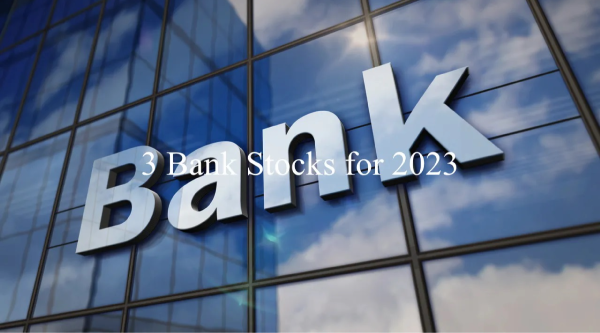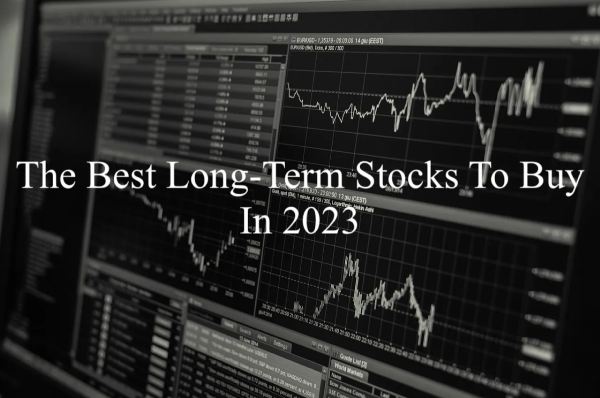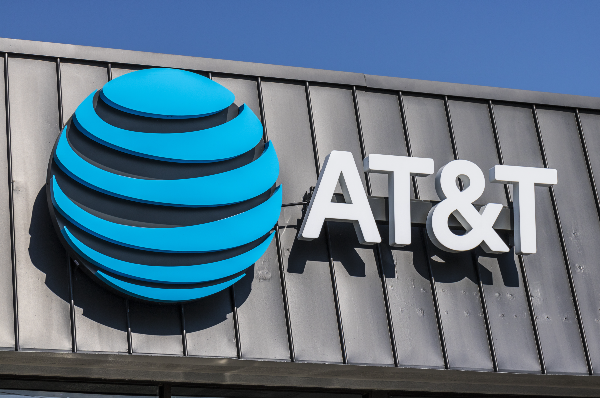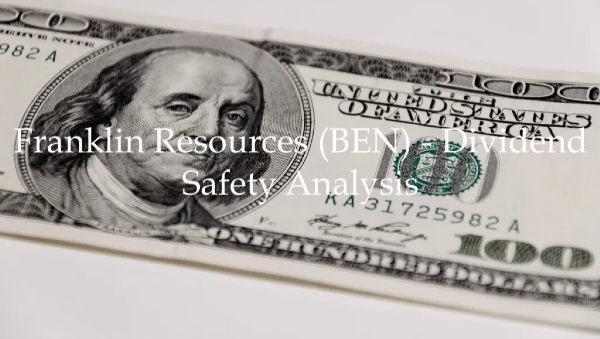Some banks, such as Silicon Valley Bank (SIVBQ), Credit Suisse, and so on, have recently made the news due to the problems they experienced. Bank runs, and inadequate risk management practices at these banks caused them to fail, but that does not mean every bank stock is poised to share the same results.
Instead, some banks are pretty attractive. Banks tend to benefit from rising net interest margins when interest rates rise, boosting their revenues. At the same time, many banks have ambitious and shareholder-friendly shareholder return programs in place. Moreover, valuations in the banking industry are frequently lower than the broader market valuations.
Add above-average dividend yields, and bank stocks can be compelling investments. In this report, we will showcase three bank stocks that are attractive today, and that could perform well during the current year.

3 Bank Stocks for 2023
Photo Credit: Deposit Photo
Affiliate
Try the Sure Dividend Pro Plan. It includes the Sure Dividend Newsletter for dividend growth stocks. The Sure Dividend Retirement Newsletter for high-yield, REIT, and MLP stocks. The Sure Passive Newsletter for buy-and-hold forever stocks. Risk free 7-day free trial and grace period. Sure Dividend Coupon Code – DP100 for $100 off.
3 Banks Stocks for 2023
Citigroup Inc.
Citigroup Inc. (C) is a large and diversified bank active across different businesses, including investment banking, credit cards, commercial banking, etc. It operates thousands of branches across many countries, although it has recently been reducing its international exposure by exiting non-core markets.
Citigroup reported its most recent quarterly results in April, showcasing strong revenue growth of 12% on the back of rising net interest income. In addition, the company’s earnings came in significantly above estimates, allowing Citigroup to grow its common equity tier 1 ratio.
Thanks to solid capitalization levels, Citigroup is well-positioned to increase total returns over time. This will likely happen via a combination of dividend increases and share repurchases. At least, that’s what the company has pursued in the past.
Dividend and Valuation
At current prices, Citigroup trades with a dividend yield of 4.3%, well above the broad market’s dividend yield. The dividend looks well-covered, as the dividend payout ratio is around 30%, based on forecasts for this year’s earnings-per-share, standing at approximately $6.00.
It should be noted that Citigroup’s performance during the subprime mortgage crisis and the Great Recession was pretty bad, as the company generated huge losses and shareholders suffered from a massive share price decline. That being said, capitalization levels are signifcantly higher today, making Citigroup less risky than in the past.
Since Citigroup trades below fair value today, we see the potential for earnings multiple expansion as we advance. Combined with a dividend yield of more than 4% and some earnings-per-share growth potential, Citigroup looks well-positioned to deliver annual returns of more than 10% annually over the coming five years, making Citigroup an attractive total return investment.
JPMorgan Chase & Co.
JPMorgan Chase & Co. (JPM) is the largest bank in the United States. It was founded over 200 years ago and has grown into a behemoth worth around $400 billion. JPMorgan Chase is active in investment banking, consumer banking, commercial banking, credit cards, and asset management.
JPMorgan reported robust earnings results in April, easily beating estimates on both lines. Higher interest rates boosted the bank’s net interest margin, which, in turn, had a substantial positive impact on its revenues. As a result, JPMorgan generated revenue growth of 25% on a year-over-year basis, and profits were more than 15% above what analysts had forecasted.
The bank is highly profitable and saw its book value expand by almost 10% year-over-year, despite making dividend payments over the last year. Moreover, JPMorgan’s capitalization levels look solid so investors can expect further substantial shareholder returns in the coming years.
Dividend and Valuation
Today, JPMorgan trades with a dividend yield of 3.1%, which is not the highest among the major banks but still very solid compared to the broad market’s dividend yield of less than 2.0%. JPMorgan’s dividend looks very safe, with a payout ratio of less than 30%. Further, the firm has raised the dividend for 12 years, making it a Dividend Contender.
The company has been more resilient than most other banks during the Great Recession and Financial Crisis, which indicates that JPMorgan Chase could be a below-average risk pick in the banking industry.
We believe that between earnings growth potential, its dividend, and some multiple expansion upside, JPMorgan could deliver solid returns in the high single digits going forward.
Toronto-Dominion Bank
Toronto-Dominion Bank (TD) is a large Canadian bank that has been active for more than 150 years, as it was founded in 1855. It is primarily engaged in Canada and some international markets, including the United States.
Toronto-Dominion Bank offers diverse services to its customers, including business and corporate banking, consumer banking, asset management, and investment banking.
Canadian bank stocks outperformed during past recessions, including during the Financial Crisis and Great Recession, when they proved more resilient than most large U.S. banks. While there is no guarantee that this will hold true in the future, the past track record indicates that Toronto-Dominion could be a lower-risk bank investment.
Dividend and Valuation
The bank has a history of increasing its dividend over time, having raised the payout for 12 years in a row. In addition, the bank has paid a dividend for 100+ years and is a Canadian Dividend Aristocrat. At current prices, Toronto-Dominion Bank trades with a dividend yield of 4.5%, which is attractive. Also, the bank’s dividend payout ratio is far from high, at 42%, which indicates the risk of a dividend cut is small.
Toronto-Dominion reported solid business growth when it announced its fourth-quarter earnings results. First quarter results have not yet been reported, unlike those of Citigroup and JPMorgan. Revenue was up by a little more than 8% year-over-year, while its adjusted net income grew at a similar rate.
Toronto-Dominion is expected to experience substantial business and profit growth during the current year, 2023. We also forecast that Toronto-Dominion will grow its earnings-per-share at a solid rate of 6% beyond 2023.
At current prices, Toronto-Dominion Bank trades at around 10X this year’s forecasted net profits, below the historic valuation norm and approximately 20% below what we deem a fair valuation for this resilient, high-quality banking stock.
Thanks to its compelling dividend yield, solid earnings growth potential, and some expected multiple expansion tailwinds, Toronto-Dominion Bank should be able to deliver annual returns of more than 10% for the next couple of years, making shares an attractive investment at current prices.
Related Articles About Toronto-Dominion Bank on Dividend Power
Disclosure: Members of the Sure Dividend team are long C, JPM, and TD






























Some banks, such as Silicon Valley Bank (SIVBQ), Credit Suisse, and so on, have recently made the news due to the problems they experienced. Bank runs, and inadequate risk management practices at these banks caused them to fail, but that does not mean every bank stock is poised to share the same results.
Instead, some banks are pretty attractive. Banks tend to benefit from rising net interest margins when interest rates rise, boosting their revenues. At the same time, many banks have ambitious and shareholder-friendly shareholder return programs in place. Moreover, valuations in the banking industry are frequently lower than the broader market valuations.
Add above-average dividend yields, and bank stocks can be compelling investments. In this report, we will showcase three bank stocks that are attractive today, and that could perform well during the current year.
3 Bank Stocks for 2023
Photo Credit: Deposit Photo
Affiliate
3 Banks Stocks for 2023
Citigroup Inc.
Citigroup Inc. (C) is a large and diversified bank active across different businesses, including investment banking, credit cards, commercial banking, etc. It operates thousands of branches across many countries, although it has recently been reducing its international exposure by exiting non-core markets.
Citigroup reported its most recent quarterly results in April, showcasing strong revenue growth of 12% on the back of rising net interest income. In addition, the company’s earnings came in significantly above estimates, allowing Citigroup to grow its common equity tier 1 ratio.
Thanks to solid capitalization levels, Citigroup is well-positioned to increase total returns over time. This will likely happen via a combination of dividend increases and share repurchases. At least, that’s what the company has pursued in the past.
Dividend and Valuation
At current prices, Citigroup trades with a dividend yield of 4.3%, well above the broad market’s dividend yield. The dividend looks well-covered, as the dividend payout ratio is around 30%, based on forecasts for this year’s earnings-per-share, standing at approximately $6.00.
It should be noted that Citigroup’s performance during the subprime mortgage crisis and the Great Recession was pretty bad, as the company generated huge losses and shareholders suffered from a massive share price decline. That being said, capitalization levels are signifcantly higher today, making Citigroup less risky than in the past.
Since Citigroup trades below fair value today, we see the potential for earnings multiple expansion as we advance. Combined with a dividend yield of more than 4% and some earnings-per-share growth potential, Citigroup looks well-positioned to deliver annual returns of more than 10% annually over the coming five years, making Citigroup an attractive total return investment.
JPMorgan Chase & Co.
JPMorgan Chase & Co. (JPM) is the largest bank in the United States. It was founded over 200 years ago and has grown into a behemoth worth around $400 billion. JPMorgan Chase is active in investment banking, consumer banking, commercial banking, credit cards, and asset management.
JPMorgan reported robust earnings results in April, easily beating estimates on both lines. Higher interest rates boosted the bank’s net interest margin, which, in turn, had a substantial positive impact on its revenues. As a result, JPMorgan generated revenue growth of 25% on a year-over-year basis, and profits were more than 15% above what analysts had forecasted.
The bank is highly profitable and saw its book value expand by almost 10% year-over-year, despite making dividend payments over the last year. Moreover, JPMorgan’s capitalization levels look solid so investors can expect further substantial shareholder returns in the coming years.
Dividend and Valuation
Today, JPMorgan trades with a dividend yield of 3.1%, which is not the highest among the major banks but still very solid compared to the broad market’s dividend yield of less than 2.0%. JPMorgan’s dividend looks very safe, with a payout ratio of less than 30%. Further, the firm has raised the dividend for 12 years, making it a Dividend Contender.
The company has been more resilient than most other banks during the Great Recession and Financial Crisis, which indicates that JPMorgan Chase could be a below-average risk pick in the banking industry.
We believe that between earnings growth potential, its dividend, and some multiple expansion upside, JPMorgan could deliver solid returns in the high single digits going forward.
Toronto-Dominion Bank
Toronto-Dominion Bank (TD) is a large Canadian bank that has been active for more than 150 years, as it was founded in 1855. It is primarily engaged in Canada and some international markets, including the United States.
Toronto-Dominion Bank offers diverse services to its customers, including business and corporate banking, consumer banking, asset management, and investment banking.
Canadian bank stocks outperformed during past recessions, including during the Financial Crisis and Great Recession, when they proved more resilient than most large U.S. banks. While there is no guarantee that this will hold true in the future, the past track record indicates that Toronto-Dominion could be a lower-risk bank investment.
Dividend and Valuation
The bank has a history of increasing its dividend over time, having raised the payout for 12 years in a row. In addition, the bank has paid a dividend for 100+ years and is a Canadian Dividend Aristocrat. At current prices, Toronto-Dominion Bank trades with a dividend yield of 4.5%, which is attractive. Also, the bank’s dividend payout ratio is far from high, at 42%, which indicates the risk of a dividend cut is small.
Toronto-Dominion reported solid business growth when it announced its fourth-quarter earnings results. First quarter results have not yet been reported, unlike those of Citigroup and JPMorgan. Revenue was up by a little more than 8% year-over-year, while its adjusted net income grew at a similar rate.
Toronto-Dominion is expected to experience substantial business and profit growth during the current year, 2023. We also forecast that Toronto-Dominion will grow its earnings-per-share at a solid rate of 6% beyond 2023.
At current prices, Toronto-Dominion Bank trades at around 10X this year’s forecasted net profits, below the historic valuation norm and approximately 20% below what we deem a fair valuation for this resilient, high-quality banking stock.
Thanks to its compelling dividend yield, solid earnings growth potential, and some expected multiple expansion tailwinds, Toronto-Dominion Bank should be able to deliver annual returns of more than 10% for the next couple of years, making shares an attractive investment at current prices.
Related Articles About Toronto-Dominion Bank on Dividend Power
Disclosure: Members of the Sure Dividend team are long C, JPM, and TD
Originally Posted on dividendpower.org